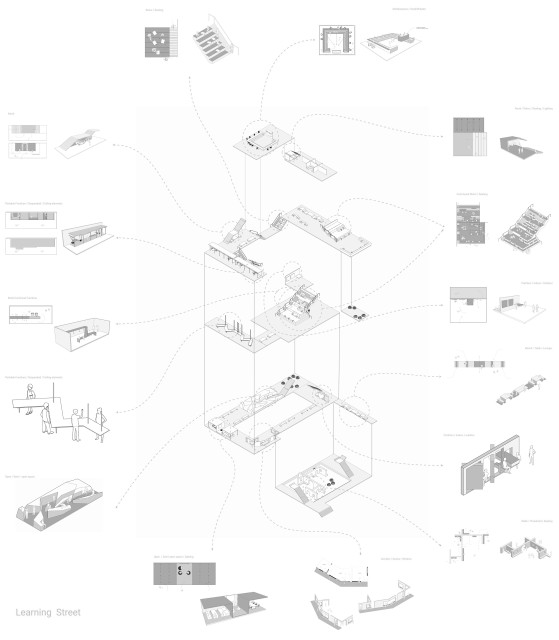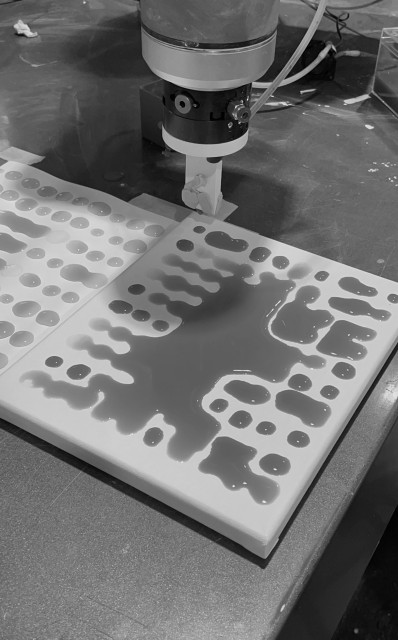urban interiority [×]

Introduction [×]
Master of Interior Design Partnered Design Studio, semester 1 2021 with the City of Melbourne
The studio – urban interiority – is based on the proposition that interior design is a critical twenty-first century practice due to its potential to address the current critical issues facing the urban environment where there are now more people than ever before living in cities. An interior design focus also brings with it the capacity and skills of the interior designer as a practitioner who attends to the ‘relationship between people and space in terms of physical and psychological parameters to improve the quality of life’ (International Federation of Interior Architects/Designers Declaration). The pandemic has had a devastating impact on the city – economically, socially and culturally. It has significantly altered people’s habits and assumptions. Students received a briefing from the City of Melbourne and were invited to invent a new urban interiority through new styles of living and practices. The studio was composed of 8 groups each with 3 students – some of whom were in Melbourne and others who were situated in other cities around the world – everyone bringing an extraordinary array of experiences – cultural, social, historical – which were drawn upon through experimentation into a series of manifestos and design projects for a new urban interiority.
Associate Professor Suzie Attiwill (studio leader)
Lingas Tran (studio assistant)
Temporal Citizenship [×]
Preconceived notions of citizenship offer a sense of belonging to a nation, as well as privileges and responsibilities. However, as a group of interior designers, we think this notion of citizenship should be expanded from static and permanent ownership of nationality to temporal citizenship that does not need a certificate to obtain and create a sense of belonging. In this experiment, we enfolded this notion of temporal citizenship through notions of saying, listening and seeing to encourage dynamic participation with the city and perhaps create a city in a different layer.
Team:
Jiaqi Ma
Guanfeng Huang
Stephanie Siy Cha
Anti_Lonely City [×]
The city can be a lonely place. There is a distinct flavour to loneliness that is not just about being alone but also due to the lack of meaningful relationships and connections between people and surroundings. We proposed to reinvent these lonely gaps by initiating a process of ‘mutual osmosis’ that invites people to share our passion towards a common knowledge and culture. We aim to re-activate the hidden characters or incarnations of lonely places to bring out the space’s original essence situated in history and retrieve the memory of belonging, and through the cultural exchange to embed narratives and meanings in these lonely gaps.
Team:
Yan Liu Cultural games, Chinatown intervention
Tarika Sekur The new Howey Place, Coles Arcade
Muqui Wang_ Peach Blossom Fantasy Perspective, Chinatown
DomestiCITY [×]
DomestiCITY is a proposed urban interiority that is an extension of the home. We aim to enhance three critical qualities of the domestic realm as familiarity or a feeling of being at home, culture and play to encourage individuals to come back into the city of Melbourne. The project aims to find ways to slowly ease individuals back into public life. To allow for a smoother transition, the interventions aim to bring the familiarity of our homes, which turned into safe havens during the lockdowns, into the urban context to mitigate anxiety and reduce stress for individuals. Thereby allowing for smaller and more manageable steps into the new normal post-COVID-19.
Team:
Shrusshti Gadepalli_Living Room
Chee Yung Siau_Backyard
Laverne Tiong_Urban Kitchen
Engaging City [×]
Our proposition addresses how the city is in a state of neglect. Engaging City starts from three keywords: stimulus, participation, and presence. Stimulus is a method of activation method and a strategy to bring people back to the city through attraction and empathy rather than feelings of anxiety or fantasy. Participation is a presentation process of interaction between people and the urban interior. We believe Melbourne needs stimulation to challenge and reinvigorate the urban fabric that no longer has a sense of presence and our interventions help the city and people to find a new meaning of presence.
Team:
Yilun Hu Presence Royal Arcade intervention
Guowei Niu Participation Causeway intervention view from Bourke St Mall
Lu Xu Stimulus Bourke St Mall intervention
Equilibrium Ecosophy [×]
Ecosophy is a dynamic state of balance, harmony in environmental ecology to social ecology and to mental ecology. We need to build up an awareness that we all are part of the environmental ecology. Therefore, the aim of our proposal is to design ways and strategies to encourage collective contributions from everyone to act environmentally friendly and be part of the urban greening process. Our proposal uses the 7 seasons in the Eastern Kulin Seasonal calendar as a strategy to celebrate the temporal beauty by the work of nature at each time of the year and through this to build connections with nature in the urban environment.
Team:
Jiafei Huang Biderap Dry Season installation, Collins St
Wei-Yang Tseng Poorneet Tadpole Season installation, Hardware Lane
Huikang Zheng _Wombat season installation, Victoria Market
Healing City [×]
The design concept is to create a space where multi-sensory elements like the visual, sound, touch, and smell heal its people and environment both physically and mentally. Three design interventions are situated in close proximity near the Capitol Arcade and Howey Place. Each design proposition aims to enhance the quality of life and its environment by establishing a cozy atmosphere that is walkable, dynamic, and intimate. This approach to design focuses on nurturing human connections and enriching the communities thus making space lively and energetic.
Team:
Boyang Li Attracting people at the entrance
Vaibhavi Setlur Raghuram City Capsule healing experience
Ruiqi Wu _ Visual of passive healing intervention
Public-ness [×]
Publicness, we believe, is a medium to create space for communication and engagement for both individuals and the collective. Our group wants to reintroduce the idea of "publicness” as a new urban interiority to encourage people to be part of the publicness of the city. Designing a new compact intervention to be placed in street car parks in any location within the city of Melbourne and can be used in other countries as well. The new space and atmosphere created will gather people in a small group in the post-pandemic context and help the individual make new relationships through shared experiences as well as the connection with the urban environment.
Team:
Ananya Garg Located in a retail precinct
Yinglin Wang After work gathering
Xueying Zhang _ Bubble Wall
Urban Village Living Room [×]
This project stemmed from our observation that people who are living in the city are living in a state of urban disconnect. While there are more people living in the city than ever before and the city is becoming denser and denser, we are seeing a rise in urban loneliness, inequality, social alienation, and depleting mental and physical wellbeing within the urban environment.
We have designed a temporal and flexible space for different types of activities to foster human connections such as socialising and sharing of ideas, interactive games, and participative activities, exhibitions, and performances; a place to rest, meditate, daydream, explore and wonder.
Team:
Elicy Lay
Qingyu Zhang
Yuanlong Zheng























































































































